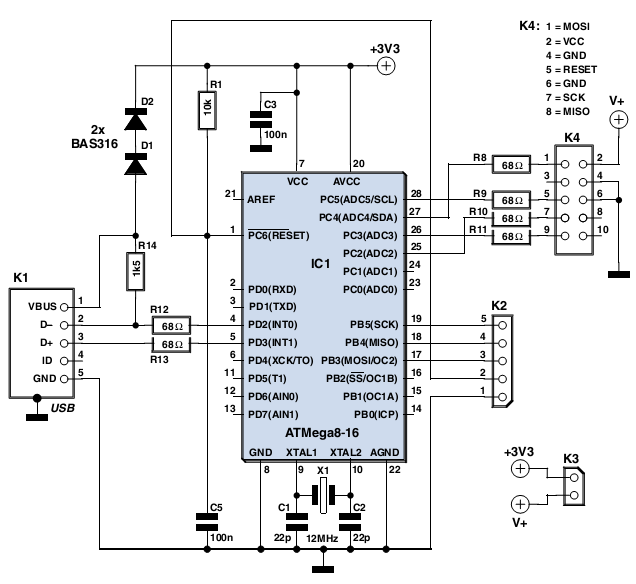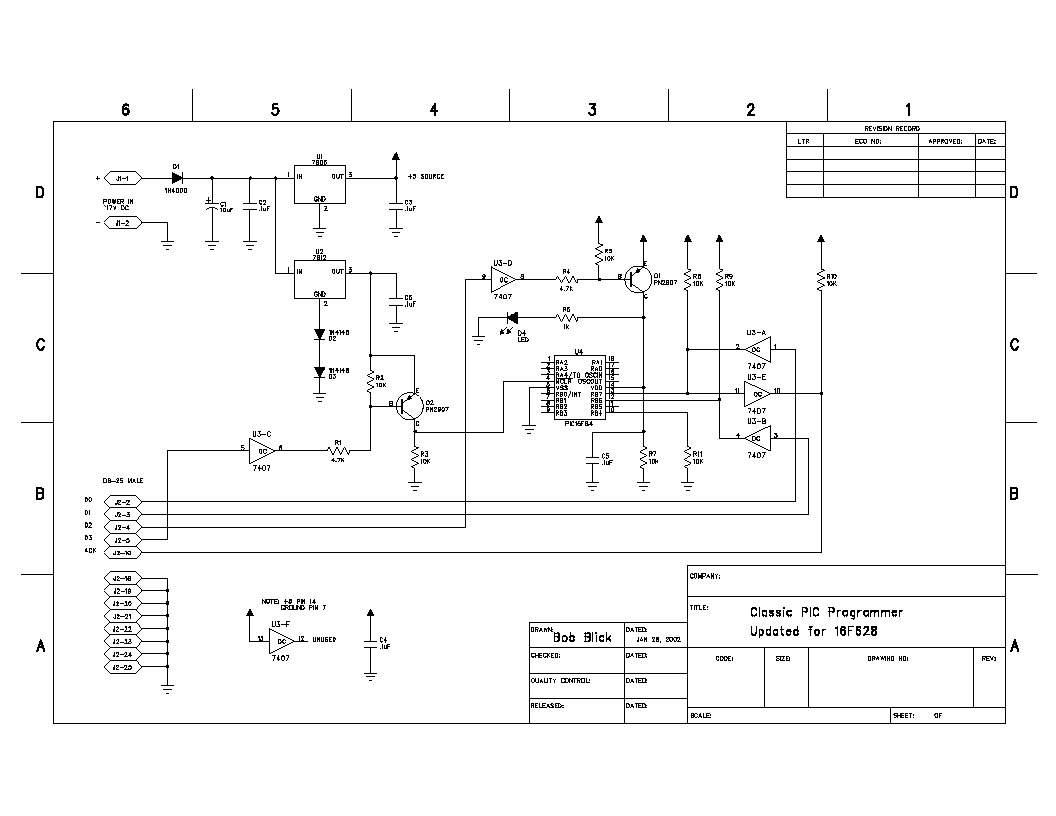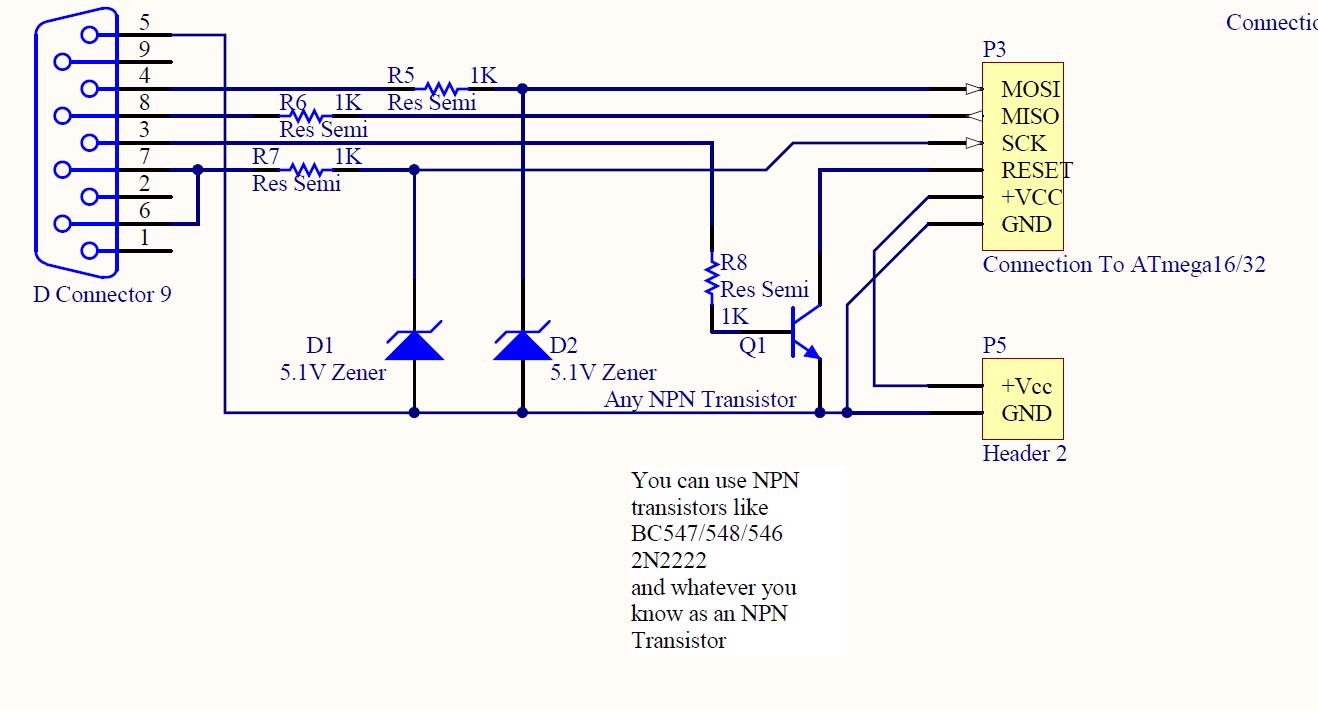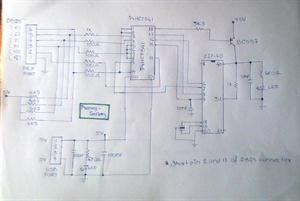
Fluffy - A Scenix (and PIC) Programmer
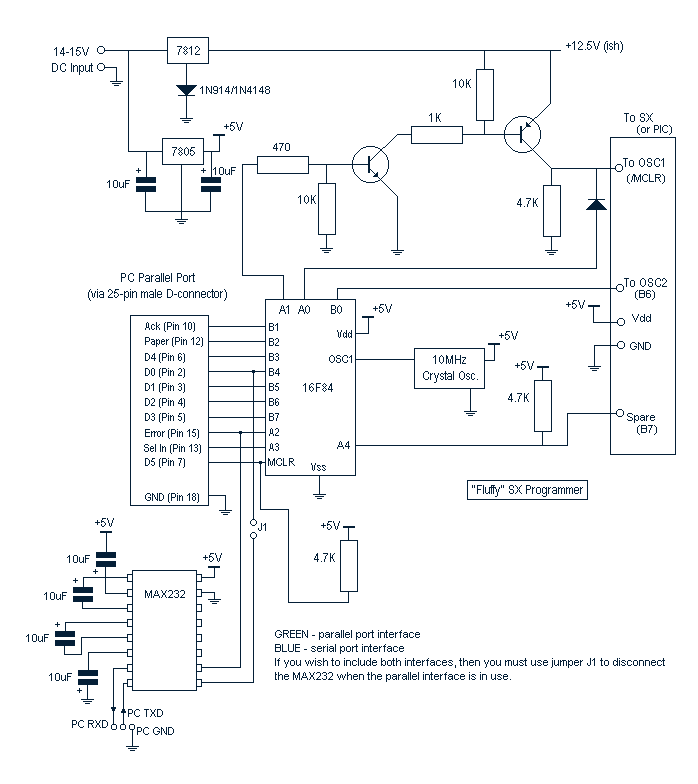
Anyway, Fluffy is a SX programmer for people who have already experimented with PIC chips, and want to try out the Scenix SX family. I built Fluffy because I wanted to experiment with the SX's, but didn't want to spend $300 or so bucks on the official development system. To build it, you will need a PIC16F84 (a 16C84 will probably also work, but I don't have any to test!). Note that this implies you should already have a working PIC programmer. If you don't, you might want to check out COM84, or any of the multitude of free, cheap PIC programmers available on the web.
Fluffy is designed as a low-cost alternative for programming Scenix SX microcontrollers, which are known for their efficiency and performance in embedded applications. The circuit primarily utilizes the PIC16F84 microcontroller as its core component. The PIC16F84 serves as the interface between the SX microcontroller and the programming environment, allowing users to upload their code efficiently.
The schematic for Fluffy includes essential components such as a power supply circuit that provides the necessary voltage levels for both the PIC16F84 and the SX microcontroller. Typically, a regulated 5V supply is sufficient for operation. Additionally, decoupling capacitors should be placed close to the power pins of the microcontrollers to ensure stable operation by filtering out noise.
A programming interface is also included in the design, which typically consists of a series of resistors and capacitors configured to create the necessary timing and logic levels for programming the SX chips. This interface allows the PIC16F84 to communicate with the SX microcontroller using the appropriate programming protocol.
Connections to the SX microcontroller should be clearly labeled in the schematic, indicating the programming pins such as MCLR (Master Clear), VDD (power), VSS (ground), and the data lines used for communication. It is essential to ensure that the connections are made correctly to avoid any damage to the components.
For users who do not possess a PIC programmer, it is advisable to explore options such as the COM84 or other inexpensive alternatives available online. These programmers can facilitate the initial setup required to use Fluffy effectively.
Overall, Fluffy represents a practical solution for hobbyists and engineers looking to experiment with Scenix SX microcontrollers without incurring high costs associated with commercial development systems. The design emphasizes simplicity and accessibility, making it an appealing choice for those interested in microcontroller programming.Anyway, Fluffy is a SX programmer for people who have already experimented with PIC chips, and want to try out the Scenix SX family. I built Fluffy because I wanted to experiment with the SX's, but didn't want to spend $300 or so bucks on the official development system.
To build it, you will need a PIC16F84 (a 16C84 will probably also work, but I don't have any to test!). Note that this implies you should already have a working PIC programmer. If you don't, you might want to check out COM84, or any of the multitude of free, cheap PIC programmers available on the web.
🔗 External reference
Fluffy is designed as a low-cost alternative for programming Scenix SX microcontrollers, which are known for their efficiency and performance in embedded applications. The circuit primarily utilizes the PIC16F84 microcontroller as its core component. The PIC16F84 serves as the interface between the SX microcontroller and the programming environment, allowing users to upload their code efficiently.
The schematic for Fluffy includes essential components such as a power supply circuit that provides the necessary voltage levels for both the PIC16F84 and the SX microcontroller. Typically, a regulated 5V supply is sufficient for operation. Additionally, decoupling capacitors should be placed close to the power pins of the microcontrollers to ensure stable operation by filtering out noise.
A programming interface is also included in the design, which typically consists of a series of resistors and capacitors configured to create the necessary timing and logic levels for programming the SX chips. This interface allows the PIC16F84 to communicate with the SX microcontroller using the appropriate programming protocol.
Connections to the SX microcontroller should be clearly labeled in the schematic, indicating the programming pins such as MCLR (Master Clear), VDD (power), VSS (ground), and the data lines used for communication. It is essential to ensure that the connections are made correctly to avoid any damage to the components.
For users who do not possess a PIC programmer, it is advisable to explore options such as the COM84 or other inexpensive alternatives available online. These programmers can facilitate the initial setup required to use Fluffy effectively.
Overall, Fluffy represents a practical solution for hobbyists and engineers looking to experiment with Scenix SX microcontrollers without incurring high costs associated with commercial development systems. The design emphasizes simplicity and accessibility, making it an appealing choice for those interested in microcontroller programming.Anyway, Fluffy is a SX programmer for people who have already experimented with PIC chips, and want to try out the Scenix SX family. I built Fluffy because I wanted to experiment with the SX's, but didn't want to spend $300 or so bucks on the official development system.
To build it, you will need a PIC16F84 (a 16C84 will probably also work, but I don't have any to test!). Note that this implies you should already have a working PIC programmer. If you don't, you might want to check out COM84, or any of the multitude of free, cheap PIC programmers available on the web.
🔗 External reference
